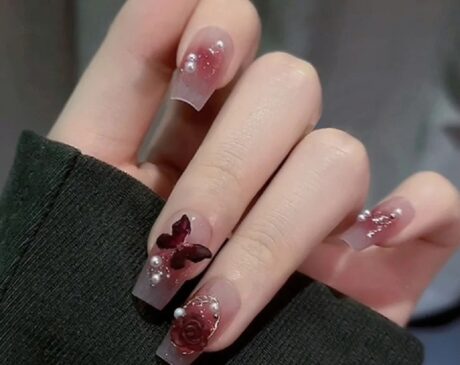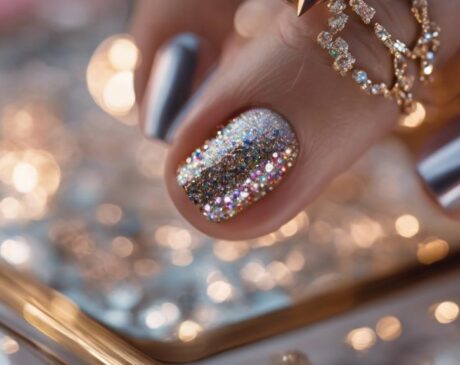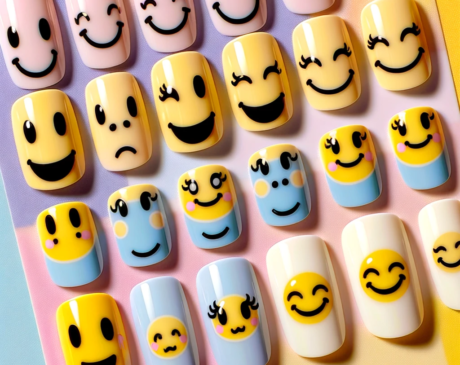Can I Use Acrylic as Nail Glue?

Acrylic can be used as nail glue, offering durability and versatility for long-lasting enhancements. However, there are potential drawbacks such as nail damage, adhesion issues, and weakening of natural nails. Proper nail preparation, precise application techniques, and maintaining a consistent ratio of acrylic to liquid are key for successful results. Understanding the pros and cons, along with tips for application, can help you make an informed decision. If you are curious about comparing acrylic to traditional nail glue, potential risks, alternative uses for acrylic, or safe removal methods, there's more valuable information to explore.
Key Takeaways
- Acrylic can be used as nail glue for creating durable and customizable nail enhancements.
- Proper application techniques are essential for successful adhesion and long-lasting results.
- Acrylic offers strength and versatility for different nail designs and shapes.
- It is important to maintain the correct acrylic-to-liquid ratio for optimal results.
- Acrylic can provide a long-lasting solution, but be aware of the potential risks and nail damage.
Pros of Using Acrylic for Nails
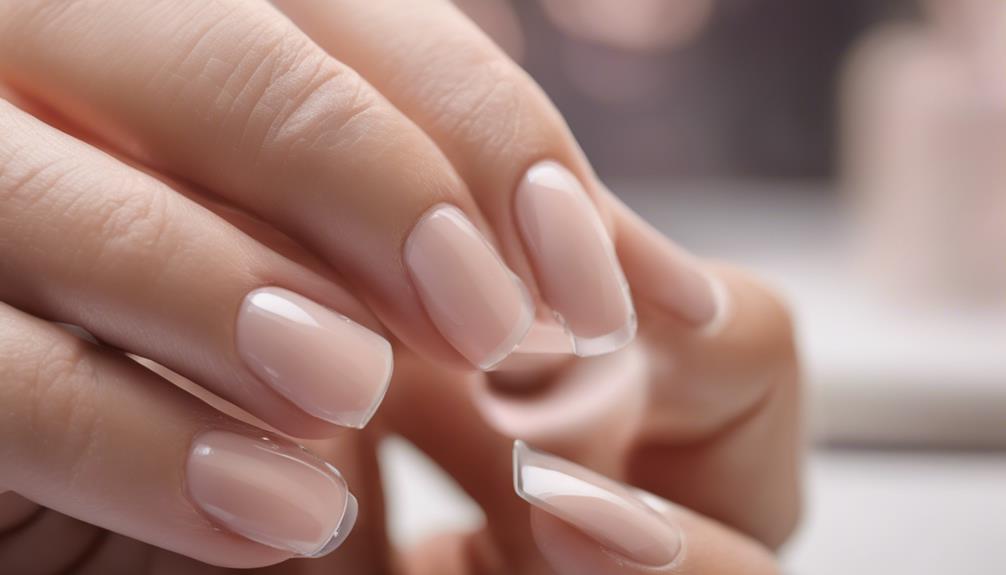
When considering the benefits of using acrylic for nail applications, it becomes evident that its durability and versatility make it a popular choice among nail technicians and enthusiasts alike. Acrylic nails are renowned for their robustness, making them ideal for individuals seeking long-lasting nail enhancements that can withstand daily activities. The strength of acrylic also allows for various designs and shapes to be crafted, catering to diverse client preferences and occasions.
Furthermore, acrylic offers a level of flexibility during the application process, enabling nail technicians to sculpt and mold the nails to perfection. This feature is particularly advantageous when creating custom designs or repairing damaged nails, as acrylic can be shaped and smoothed to achieve a flawless finish. Additionally, acrylic nails are known for their affordability compared to other nail enhancement options, making them accessible to a wide range of clients looking to enhance the beauty of their nails without breaking the bank.
Cons of Using Acrylic Instead
While using acrylic as nail glue can be convenient, it comes with potential drawbacks. One major concern is the possibility of nail damage that can occur due to improper application or removal of the acrylic. Additionally, adhesion issues may arise, leading to nails lifting or breaking prematurely.
Potential Nail Damage
Using acrylic as nail glue instead of traditional nail glue can lead to potential nail damage, particularly weakening and thinning of the natural nails. Acrylic, when used incorrectly or too frequently, can cause the natural nails to become brittle and prone to breakage. This is because acrylic is a strong adhesive designed for artificial nails, not for natural nail application. The chemicals in acrylic can also strip the nails of their natural oils and moisture, resulting in dry, weak nails that are more susceptible to damage. To maintain the health of your natural nails, it is advisable to use nail products specifically formulated for natural nails and to follow proper application and removal techniques.
Adhesion Issues
In the realm of nail care, the utilization of acrylic as a substitute for traditional nail glue may present significant challenges related to adhesion. While acrylic is durable and commonly used for nail extensions, it may not adhere as effectively as specialized nail glues. Adhesion issues with acrylic can lead to nails lifting or popping off prematurely, causing inconvenience for individuals seeking long-lasting nail enhancements. Proper preparation of the natural nail bed and precise application techniques are crucial to mitigate these adhesion concerns when using acrylic. Additionally, acrylic may not bond well with certain nail types or surfaces, further complicating the adhesion process. It is essential for nail technicians and enthusiasts to consider these potential adhesion issues before choosing acrylic as a nail glue alternative.
How to Apply Acrylic as Nail Glue
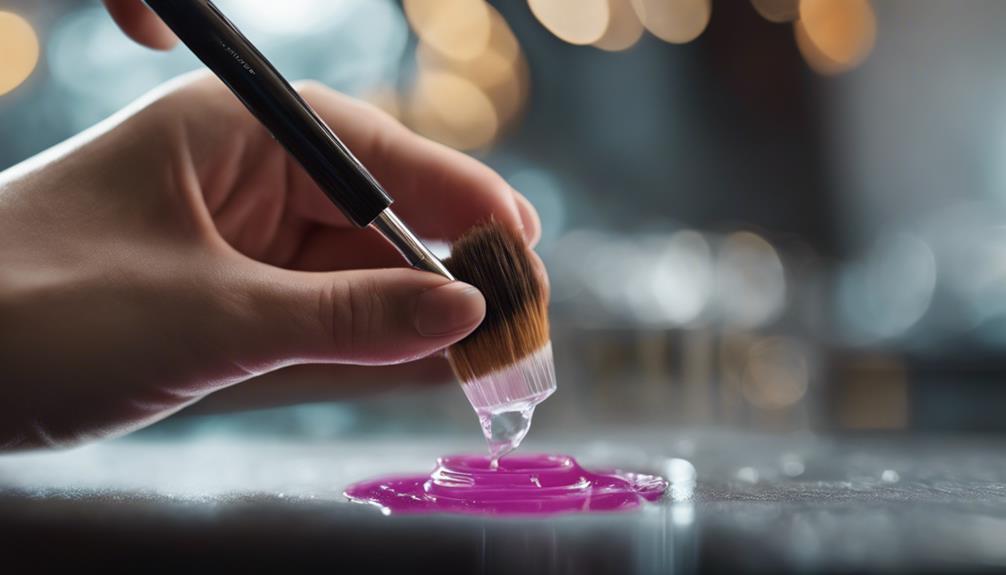
To properly apply acrylic as nail glue, ensure the nail surface is clean and dry before beginning the application process. This helps in maximizing the adhesion of the acrylic to the natural nail, ensuring a longer-lasting manicure. Follow these steps for a successful application:
| Step | Instructions | Tips |
|---|---|---|
| Cleanse the nails | Remove any existing polish and wash hands thoroughly. Dry hands completely before moving on to the next step. | Ensuring clean nails helps the acrylic bond better and prevents lifting. |
| Apply primer | Apply a thin layer of primer to the natural nail. Allow it to dry completely before proceeding with the next step. | Primer enhances adhesion and helps the acrylic adhere better to the nail plate. |
| Mix acrylic powder | Mix the acrylic powder and liquid monomer as per the product instructions until you achieve a smooth, workable consistency. | Consistency is key for a smooth application and a strong bond. |
| Apply acrylic | Using a brush, apply the acrylic mixture to the natural nail, shaping it as desired. Work quickly before it dries. | Work efficiently to prevent the acrylic from hardening before you finish shaping it. |
Tips for Using Acrylic Successfully
For optimal results when using acrylic for nail applications, prioritize maintaining a consistent acrylic-to-liquid ratio throughout the process. This ratio is crucial for achieving the right consistency to ensure proper adhesion and a smooth finish. Additionally, when working with acrylic, it is essential to keep your work area clean and organized. This helps prevent contamination and ensures a hygienic application process.
Another important tip for successful acrylic nail applications is to work quickly but carefully. Acrylic dries fast, so being efficient in your application is key to achieving the desired results. Moreover, make sure to use high-quality acrylic products to ensure durability and longevity of the nail enhancements.
Furthermore, proper nail preparation is essential before applying acrylic. This includes shaping the nails, pushing back cuticles, and lightly buffing the nail surface to remove any oils. Lastly, practice is key to mastering the art of acrylic nail applications. The more you work with acrylic, the better you will become at creating beautiful and long-lasting nail enhancements.
Comparing Acrylic to Traditional Nail Glue
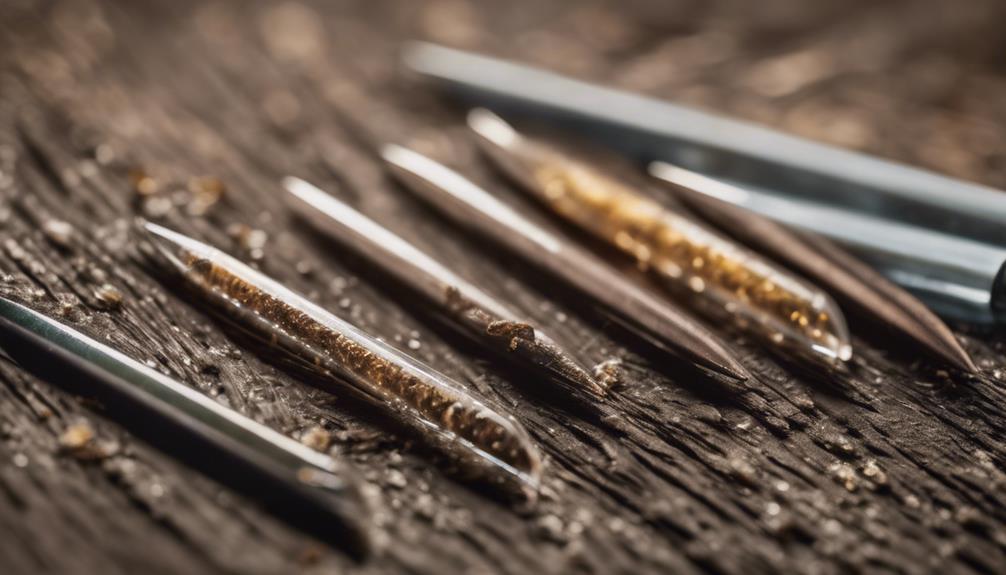
When considering the application of nail enhancements, the choice between acrylic and traditional nail glue presents differing characteristics that warrant a comparison. Acrylic is a popular choice for nail enhancements due to its durability and strength. It is a liquid and powder mixture that forms a hard protective layer over the natural nail when applied correctly. On the other hand, traditional nail glue is a quick and easy solution for attaching artificial nails but may not provide the same level of durability as acrylic. Acrylic offers the advantage of being customizable in terms of length, shape, and design, allowing for more creativity and personalization. However, traditional nail glue is often preferred for its simplicity and convenience, making it a suitable option for those looking for a temporary nail enhancement solution. Ultimately, the choice between acrylic and traditional nail glue depends on individual preferences and the desired outcome for the nails.
Potential Risks of Using Acrylic
Amidst the benefits of using acrylic for nail enhancements, it is crucial to be aware of the potential risks associated with its application to ensure a safe and successful nail enhancement experience. While acrylic nails can provide durability and a polished look, improper application or neglecting proper maintenance can lead to various issues. Here are some potential risks to consider:
| Potential Risks of Using Acrylic | Description |
|---|---|
| Nail Damage | Excessive filing or rough removal can weaken natural nails. |
| Allergic Reactions | Some individuals may develop allergies to acrylic components. |
| Infections | Improper sanitation during application can lead to fungal or bacterial infections. |
| Toxic Fumes | Inhaling the strong odors from acrylic products can be harmful. |
To mitigate these risks, it is essential to seek professional nail technicians, prioritize proper nail care, ensure good ventilation during application, and promptly address any signs of discomfort or infection. By being informed and proactive, individuals can enjoy the benefits of acrylic nails while minimizing potential hazards.
Alternative Uses for Acrylic
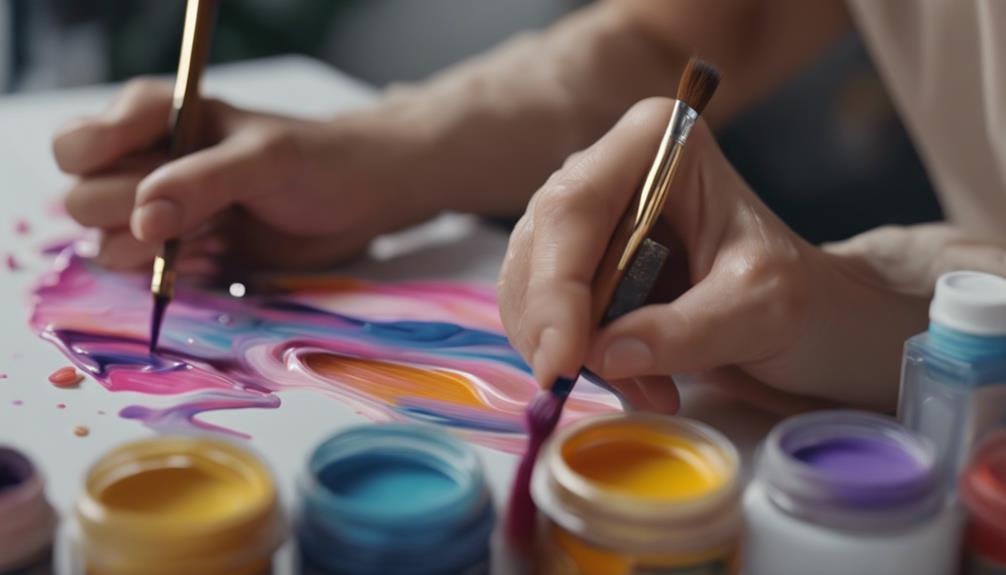
Acrylic, a versatile material known for its strength and durability, finds alternative uses beyond nail enhancements in various industries and creative projects. In the construction industry, acrylic is utilized as a sealant for windows, doors, and other fixtures due to its weather-resistant properties. Artists often incorporate acrylic into their work as a medium for painting, creating vibrant and long-lasting pieces. Acrylic sheets are also commonly used in retail displays and signage due to their clarity and impact resistance. Additionally, in the healthcare sector, acrylic is employed to create medical equipment such as dental braces, artificial teeth, and prosthetic limbs, benefiting patients with its lightweight and hypoallergenic qualities. Moreover, acrylic furniture and home decor items have gained popularity for their modern aesthetic and durability. From industrial applications to artistic endeavors, acrylic continues to prove its versatility and usefulness beyond its traditional role in nail enhancements.
Removing Acrylic Nail Glue Safely
When it comes to removing acrylic nail glue safely, it is essential to explore safe removal methods to prevent any potential damage to your nails. By following proper techniques, you can ensure that your nails remain healthy and undamaged during the removal process. Let's discuss some effective ways to safely remove acrylic nail glue without harming your nails.
Safe Removal Methods
Implementing proper removal techniques is essential when safely removing acrylic nail glue to prevent damage to the natural nails. One commonly used method is soaking the nails in acetone to dissolve the glue gently. Here is a simple guide to safely remove acrylic nail glue:
| Method | Materials Needed | Steps |
|---|---|---|
| Acetone Soak | Acetone, Nail Polish Remover, Bowl | 1. Pour acetone into a bowl. 2. Soak nails for 10-15 minutes. 3. Gently peel off softened glue. |
| Oil Massage | Cuticle oil, Warm water | 1. Apply oil around nails. 2. Soak nails in warm water. 3. Gently push off softened glue. |
| Buffing | Nail buffer | 1. Gently buff the glue off the nails. 2. Avoid over-buffing to prevent nail damage. |
Preventing Nail Damage
To safely remove acrylic nail glue and prevent nail damage, employing gentle removal methods is imperative to maintain the health and integrity of the natural nails. Harsh techniques can lead to weakening, thinning, or even breakage of the nails. One gentle method is soaking the nails in warm, soapy water to help loosen the glue. Another option is using acetone to dissolve the acrylic glue gradually. It's essential to be patient during the removal process to avoid causing trauma to the nails. After removing the acrylic nail glue, moisturizing the nails and cuticles with nourishing oils can help restore hydration and strength. By prioritizing gentle removal techniques and proper nail care, you can prevent damage and promote healthy, beautiful nails.
Frequently Asked Questions
Can Acrylic Nail Glue Be Used on Natural Nails?
When considering the compatibility of acrylic nail glue with natural nails, it's essential to prioritize safety and effectiveness. Acrylic nail glue may not be the best choice for natural nails due to potential damage and lack of adhesion.
Is Acrylic Nail Glue Safe for Sensitive Skin?
Acrylic nail glue can potentially cause irritation or allergic reactions on sensitive skin due to its strong bonding properties. It is advisable to perform a patch test before full application to ensure compatibility with sensitive skin types.
How Long Does Acrylic Nail Glue Last?
Acrylic nail glue typically lasts for about 2-3 weeks before needing a refill. Factors like daily activities and nail care routine can affect its longevity. Proper application and maintenance can help prolong its durability.
Can Acrylic Nail Glue Be Used for Nail Art?
Acrylic nail glue, while primarily designed for adhering artificial nails, can indeed be a versatile tool for nail art. Its strong bonding properties and quick drying time make it a valuable asset for creating intricate designs and securing embellishments.
Does Acrylic Nail Glue Damage Nail Beds?
While acrylic nail glue can provide a strong bond, improper application or removal techniques can potentially damage nail beds. It is crucial to follow proper nail care practices and seek professional advice if experiencing any issues.

